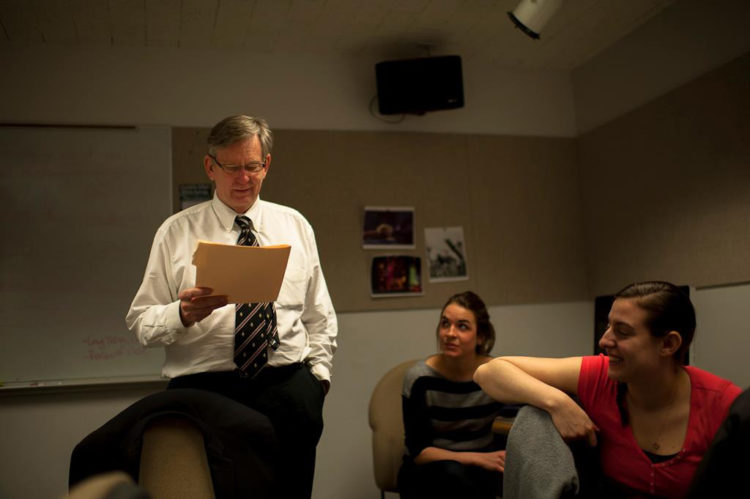For those who may not know me, allow me to share a bit about myself. I’m the Executive Director of American Society of Media Photographers (ASMP), this country’s leading trade association representing independent photographers working across commercial and editorial genres. I’m also an internationally known visual journalist with extensive print, broadcast, and online journalism experience, including positions as Managing Editor for Multimedia at The Washington Post, and Director of Photography at the National Geographic Society. Along the way, I have created, directed, and edited visual journalism projects that have earned Pulitzer Prizes, as well as EMMY, Peabody, and Edward R. Murrow awards.
Today I want to discuss an important topic that photographers deal with every day… copyright infringements. We at ASMP have been working together with other organizations to come up with a viable solution to help photographers with this issue.
Why A Small Claims Solution Must Become Law
To effectively address copyright infringements in the digital age, we must start by acknowledging the realities of our economy and legal system, as they exist today. It is not a stretch to say under current copyright law, professional photographers all too often have rights, but no remedies, when it comes to dealing with copyright infringements.
While the digital age has provided us with amazing tools and new opportunities to create, market, produce and distribute imagery to a global marketplace, it has also opened up a Pandora’s box when it comes to the challenge of enforcing copyright holder protections for photographers and other visual creators, as small business owners.
Professional photographers are finding it very difficult to maintain control of their work in a world when images travel across the globe in an instant upon release into the digital marketplace. The ability to earn a living depends on the ability to license work and maintain the integrity of that process through the life of an image. Today, an image may “go viral” after initial publication and licensing, immediately being downloaded and re-posted repeatedly, but traveling instantaneously and globally without accompanying metadata that details appropriate credit and licensing terms. Because this information is disassociated after first publication, those web publishers seeking to license images legitimately may not be able to locate the rights holder or ascertain the appropriate licensing terms. Further, compounding the problem, we live in a world when more than one generation has been raised with the idea that access to Internet content, including images, should be free and completely unfettered. All undermines the idea of licensing as a means to securing a livelihood from originally created images.
Infringements have proliferated and it is now possible for a single popular image to generate hundreds, if not thousands, of infringements on websites all across the Internet. Responding with takedown requests under terms of the Digital Millennium Copyright Act translates into a giant game of “Whack a Mole” that photographers cannot possibly play successfully. Many of our ASMP members experience the futility of takedown notices as an enforcement vehicle when infringements resurface on the same websites within minutes of a takedown order being carried out.
Currently, the only other recourse is to pursue infringement resolutions in Federal Court but that too is a highly problematic solution. For starters, most attorneys will not bring such a case forward unless the initial value of the infringements is at least $30,000.00 according to a recent ABA study. Secondly, the cost of litigating such cases can be prohibitive for visual creators, in terms of both time and money. A recent estimate put the average cost to pursue an infringement case in Federal Court at about $350,000.00 in legal fees. That is a cost few can bear, particularly when available statutory damage resolutions may not even rise to that level.
Since most visual creators are individual small business owners, they lack the time and resources to face off against deep-pocketed infringers who may hope to exhaust time, money, and resolve by extending cases through complication and delay in Federal Court.
These factors all make the current system untenable for photographers, graphic artists, and other individual visual creators seeking the protections promised under the Constitution to copyright holders for their intellectual property.
To address this issue head-on, American Society of Media Photographers (ASMP) has been working for several years with other organizations representing visual creators to get Congress to create a small claims tribunal as alternative to Federal Court to resolve infringements. Earlier this year, Michael Klipper, ASMP’s outside counsel for advocacy, authored a white paper making the case for this solution, working in conjunction with American Photographic Artists (APA), Digital Media Licensing Association (DMLA), Graphic Artists Guild (GAG), Nature Photographers of North America (NANPA), National Press Photographers Association (NPPA) and Professional Photographers of America (PPA). Together, we have pursued conversations with the U.S. Copyright Office to support their report issued in 2013 that made a persuasive argument for the idea, and we have been talking with House Judiciary Committee Members who have legislative jurisdiction over intellectual property matters.
The years of persistence engagement have now borne fruit with the introduction of H.R. 5757 “Copyright Alternative in Small Claims Enforcement (CASE) Act of 2016”, a bill introduced by Rep. Hakeem Jeffries (D-NY) and co-sponsored by Rep. Tom Marino (R-PA) to authorize establishment of a small claims board within the U.S. Copyright Office to resolve infringement disputes.
We are also anticipating introduction of another version by Rep. Judy Chu (D-CA) after the August recess, and we welcome these developments as an important next step in process we hope leads to much needed relief for photographers, videographers, graphic designers, illustrators, other visual artists, and their licensing representatives.
We are certainly grateful for these Members’ interest, and their willingness to push for legislation that would provide fair remedies for visual creators while also ensuring that the copyright system continues to strike a fair balance between the interests of consumers and creators, an idea embodied in U.S. copyright law from the founding of our republic.
From ASMP’s perspective, the key provisions of the H.R. 5757 are these:
- Creates a Board within the Copyright Office to hear claims that do not exceed $30,000, with adjudicators with experience in copyright law and alternative dispute resolution.
- Provides a less formal, streamlined process where legal representation is optional, where proceedings are conducted via video and the parties need not appear in person at the Copyright Office.
- In order to satisfy constitutional norms, allows defendants upon receiving notice, to opt out within a certain time frame and choose federal court instead.
- Enables the court to not only decide copyright infringement cases, but contractual issues related to the infringement.
- Empowers the Board to award actual damages, profits, or limited statutory damages.
- Allows defendants to raise all defenses available in federal court, including fair use.
During the forthcoming legislative process, ASMP will urge Congress to adopt additional provisions that ASMP believes are necessary to the overall success of any small claims process. For example, under H.R. 5757, a photographer or other claimant who is confronted with an uncooperative defendant who refuses to abide by a decision of the Small Claims Board must go the federal court in the District of Columbia to enforce that decision. This is a major problem for small copyright claimants who live outside the District of Columbia and would be forced to appear and/or retain local counsel to seek enforcement of such a decision. We believe it is imperative that any forthcoming bill must provide that such enforcement actions must not be so limited and should be able to be brought in federal courts more convenient to the claimants.
ASMP looks forward to working with Representatives Jeffries, Marino, and Chu as Congress goes about the critical task of ensuring that the creative works of photographers, illustrators, graphic designers and other visual artists are appropriately protected so that they are incentivized to continue producing works that change how people see their world.
If you’d like more information about this topic and would like to find out what you can do to help, please take a minute to read through this Open Letter To 2016 Political Candidates.
To find out more about ASMP, please visit ASMP.org, and you can follow Tom on Facebook, Twitter, and LinkedIn.







4 comments